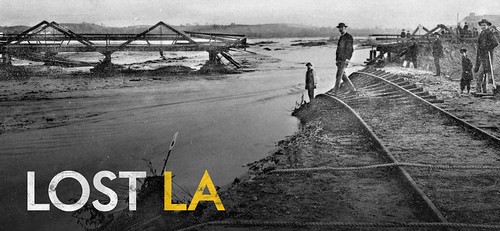
Some great L.A.-centric videos for you to watch this weekend:
First up, the debut episode of KCET's "Lost LA," which is completely up my alley. Here's the info:
Much of L.A.’s past is lost to history -- but we can rediscover it in the region’s archives. This new series, a co-production of KCETLink and the USC Libraries, in collaboration with L.A. as Subject, brings Southern California history to life by marrying archival materials with innovative forms of documentary storytelling. Hosted by L.A. historian Nathan Masters, this original series of three episodes showcases nine emerging filmmakers. From rotoscoping to cinema verité, the range of the filmmakers’ techniques mirrors the diversity of their backgrounds. But a common thread runs through their films: each brings the primary sources of L.A. history to the screen in surprising new ways. What previously hidden stories will the next generation of filmmakers unearth in the collections of L.A. As Subject members? Tune in to find out.
Watch the first episode below:
Journalist Colin Marshall's "The City in Cinema" series next tackles downtown's famed Bonaventure Hotel. Curbed LA has the details:
The Bonaventure Hotel in Downtown Los Angeles is supposedly one of the most photographed buildings in the world, but for all its appearances, it's a pretty inscrutable place: giant, reflective tubes on the outside and spiraling concrete walkways inside. [Marshall] starts to unravel the allure of the Bonaventure, which is both futuristic (see it in Buck Rogers in the 25th Century and Interstellar) and dystopian (car chases, falling deaths, shootouts, Batman, the climactic rave in Strange Days, and so many disaster movies—Marshall narrates that it "must appeal strongly to disaster filmmakers looking for structures to destroy with digital effects, given that it looks computer generated even in real life.")Watch below!
The Bonaventure opened in 1976, designed by John C. Portman, and has since appeared in dozens of movies and TV shows, from the opening of the 1980 series It's a Living to This is Spinal Tap, Escape From LA, Heat, True Lies, and, naturally, Swordfish. Marshall shows in his video how filmmakers employ its iconic exterior, its Brutalist base, and its famously transcendent elevators; use it as a shorthand for Los Angeles or move it to Shanghai or Atlanta; give it new features as needed, like balconies on "the most obviously balconyless hotel in Los Angeles"; and completely and bafflingly ignore the rotating rooftop lounge.

No comments:
Post a Comment